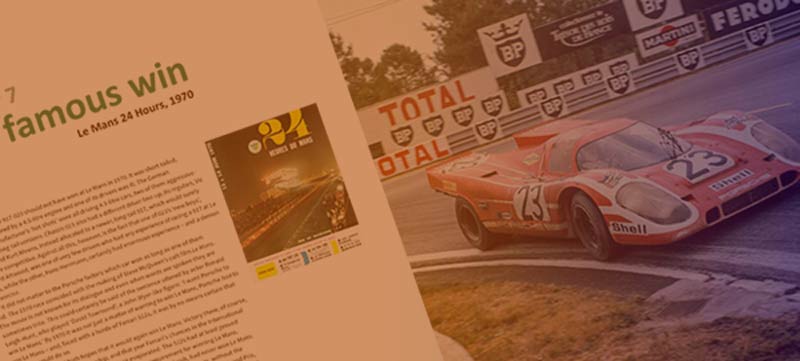
The Mini, the Space Race, and Swinging Sixties scandals
The Sixties was the time of Sputnik satellites and Saturn rockets, of Yuri Gagarin going into Earth’s orbit and Neil Armstrong stepping on the moon, and yet today when people share photographs of this decade, often they include a vehicle that was humbly earthbound. That vehicle is the Mini – whose designer, Alec Issigonis, was also obsessed with space, albeit of a different kind.

Whereas the US-Soviet Cold War fuelled a race whose distance would measure 478,000 miles (to the moon and back), Issigonis’s quest was to minimise measurements made in inches. Size was everything to Issigonis, but strictly in the sense that less is more. Issigonis’s aim was to conjure-up a car like Dr Who’s Tardis, a box that somehow seems much bigger inside than out. His approach was one of cost-conscious minimalism, creating a vehicle that was inexpensive to manufacture and cheap to run. The result was an extraordinary surprise: the Mini appealed not only to ordinary working folk, but also the wealthy Jet Set. Affordable transport for some, mobile fashion accessory for others, the Mini cheekily crossed class boundaries.

The British Motor Corporation had no reason to expect the Mini to be glamourised through association with celebrities. This car was, after all, nakedly rudimentary. The interior was so sparse there was exposed metal everywhere, the exterior so functional that the panel-seams were on the outside rather than neatly hidden from view, and the tiny 848cc A-Series engine made a meagre 34bhp. But small cars can be nimble, small cars can be light, and by doing away with the need for a front-to-back driveshaft, the Mini’s front-wheel-drive layout made it lighter still. Few horses, but not much weight to pull.

Stars of the Sixties loved it. Famous names such as Lord Snowdon and Princess Margaret, Peter Sellers and his wife Britt Ekland, singer Cilla Black and model-actress Twiggy, all appeared in newspaper photos and TV news bulletins in Minis. So, too, did the King of Cool, Steve McQueen, and each and every one of the Beatles. In fact, George Harrison’s psychedelically-coloured Mini, modified by Radford, appeared in the 1967 film Magical Mystery Tour. And then there was Christine Keeler, the 19-year-old model who had an affair with Secretary of State for War John Profumo at much the same time she was involved with a Soviet spy masquerading as an attaché. As this scandalous news entertained the nation, one famous photo showed Christine standing beside her Mini and opening its kerbside door at the precise moment a dog-collared clergyman walked by with a frown. Ah, man, the Swinging Sixties!

The power of celebrity-association was complemented, in time, by greater power from the A-Series engine. This grew to 998cc and 38bhp, before swelling further during the Mini’s life to 1098cc, 1071cc, then 1275cc, but always fitting neatly in that little engine bay. And with tuned engines in cars bearing the Cooper badge, there were giant-killing successes in racing and rallying. Long before BMC’s staid and patronising advertisements for the Mini dared to show women in anything other than a supporting role, the all-female crew of Pat Moss and Ann Wisdom steered a Mini Cooper to victory on the 1962 Netherlands Tulip Rally. More famously still, in 1964 Paddy Hopkirk’s Mini Cooper won the Monte Carlo Rally, prompting telegrams of congratulation from Prime Minister Alec Douglas-Home and the Beatles. And most famously of all, in 1969 cinema-goers the world over got to see three Mini Coopers stealing gold bullion from Turin and the starring role from Michael Caine in The Italian Job.

 It is a greatly over-used description, but the Mini, for these reasons and so many others, truly is an icon. Which is why Porter Press is celebrating the model’s 60th anniversary with the publication of Mini Scrapbook – 60 years of a British icon. Picture-led but complemented by entertaining and informative text, this £20, 176-page book is as delightful to dip into as the Mini’s door pockets, which apparently were designed to be just the right size to accommodate a bottle of Gordon’s Gin – another Sixties scandal.
It is a greatly over-used description, but the Mini, for these reasons and so many others, truly is an icon. Which is why Porter Press is celebrating the model’s 60th anniversary with the publication of Mini Scrapbook – 60 years of a British icon. Picture-led but complemented by entertaining and informative text, this £20, 176-page book is as delightful to dip into as the Mini’s door pockets, which apparently were designed to be just the right size to accommodate a bottle of Gordon’s Gin – another Sixties scandal.






Leave a comment
This site is protected by hCaptcha and the hCaptcha Privacy Policy and Terms of Service apply.